The mighty M-chassis from Tamiya has been produced for the last 25 years with multiple versions and are a complete blast to drive or even race. The “M” in the name simply stands for Mini and is basically a smaller version of your typical 1/10-scale touring car. Tamiya created the M-chassis so that they would have a platform that would be the proper scale representation for when they model a smaller sized full-scale car like a Volkswagen Beetle. If a standard 1/10-scale chassis was used, the proportions would be wrong thus forcing them to stretch the body and ruining the scale appearance of the car. If you are at all familiar with Tamiya, you know that accurate scale realism is incredibly important to them.
As mentioned above, there have been many versions of the M-chassis starting with the M-01 and going all the way up to the M-08. The M-chassis is 2WD and come either as front-wheel-drive (FWD) or rear-wheel-drive (RWD). Interestingly the chassis with an odd number in its name are FWD like the M-05 and the chassis with even numbers in its name are RWD like the M-06. Some versions have different variations where they would be offered in a short, medium or long wheelbase to correctly fit specific car bodies. There is even a Ra version that stands for rally…very cool. Over the years, Tamiya’s R&D team have continued to hone the M-chassis to achieve different goals with the platform as it progressed from the M-01 up to the M-08. You will find that some of the older proven M-chassis are still utilized like the M-03 found on the ready-to-run Suzuki Swift Super 1600 (#57754).
Once you drive one of the Tamiya M-chassis cars, you will quickly be hooked due to their fun factor. Their small compact size, distinctive handling characteristics, great-looking scale bodies with numerous performance option parts have made these cars popular worldwide. Although not originally intended for racing, they are so much fun to race and you will find many tracks that have race classes specifically for the M-chassis cars. Overall top speed is limited because it is tough to get all the power to the ground and this helps to make racing the M-chassis more about driving skill. Also, you can’t help but smile as you watch a bunch of these cars flying around a track…hence the appeal.
Tamiya sells the M-chassis cars in three ways. One way is as a kit with body where you need to build the chassis and then paint and detail the body. Next are chassis-only kits which is typically reserved for Tamiya’s special upgraded chassis like the M-07 Concept Chassis (#58647) or M-05 Ver.II Pro Chassis Kit (#58593). And lastly are the Tamiya Expert Built M-chassis cars which is what Tamiya has named their ready-to-run offerings. The Expert Built cars come completely assembled with the only thing you need to add are batteries. For this article we are focusing on just the M-chassis kits that include bodies. There are currently eleven M-chassis kits with bodies available. They either utilize the M-05 chassis or the M-06.
M-05 CHASSIS OVERVIEW
As noted above, the M-chassis that have odd numbers are front wheel drive like the M-05. The M-05 chassis features a lightweight, narrow, durable, and easy to assemble semi-monocoque resin frame. To aid in achieving the optimum weight distribution and low center of gravity, the gearbox, motor, battery pack, receiver, servo and speed control are all strategically positioned. Ground-hugging 4-wheel independent double wishbone suspension and the 3-piece steering linkage provide stable high-speed cornering. Three wheelbase lengths (210mm, 225mm, 239mm) are possible by simply switching the position of the rear suspension parts, enabling a wide range of body choices available from Tamiya. Each of the M-05 kits include the correct wheel type with the appropriate tread pattern tires that match specifically to the included body. Even though the M-05 is smaller than your typical 1/10-scale car, Tamiya spec’d a 540 size brushed motor instead of one that is smaller and less powerful. Each of the M-05 cars shown here are equipped with the reliable Tamiya TBLE-02S speed control capable of running either brushed or brushless motors. In order to complete one of these kits, you will need a 2-channel radio system, steering servo, battery pack, battery charger and polycarbonate paint for the body.
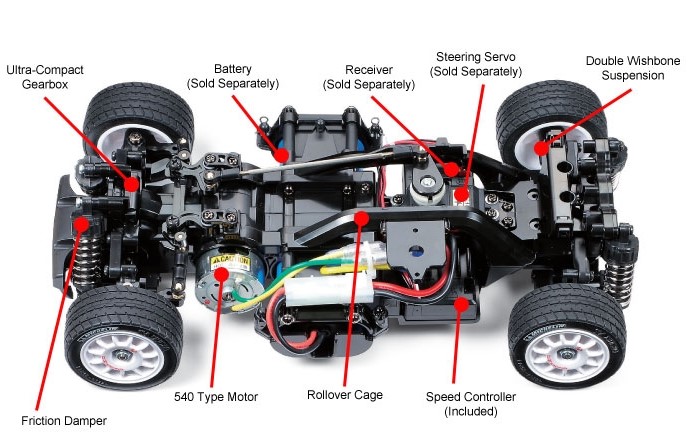
M-06 CHASSIS OVERVIEW
Unlike the M-05 where the motor is mounted near the front of the chassis, on the M-06 chassis the motor is mounted at the rear since it is a RWD setup. Inside the gearbox is a reliable and quite durable gear differential. The battery layout is also different where it is longitudinally-mounted in the center of the chassis. Positioned on either side are the electronic components. This setup give the M-06 optimum balance and a low center of gravity. At each corner is 4-wheel double wishbone suspension and friction shocks. In addition, a 3-piece steering linkage offers nimble handling response. In order to get the M-06 kit up and running, you will need to get yourself polycarbonate compatible paint for the body (except for the Lowride Pumpkin which has an ABS plastic body), a 2-channel radio system, steering servo, battery pack and battery charger. Tamiya hooks you up with a brushed 540-size motor and forward/reverse speed control. And just like with the M-05 chassis, the wheels and tires are selected to accurately complete the scale look of the specific car body that is included in the kit.
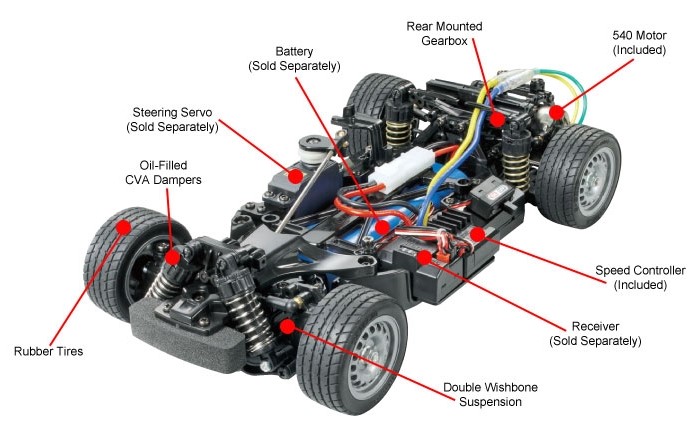
Citroen 2CV Charleston – M-05 (#58655)
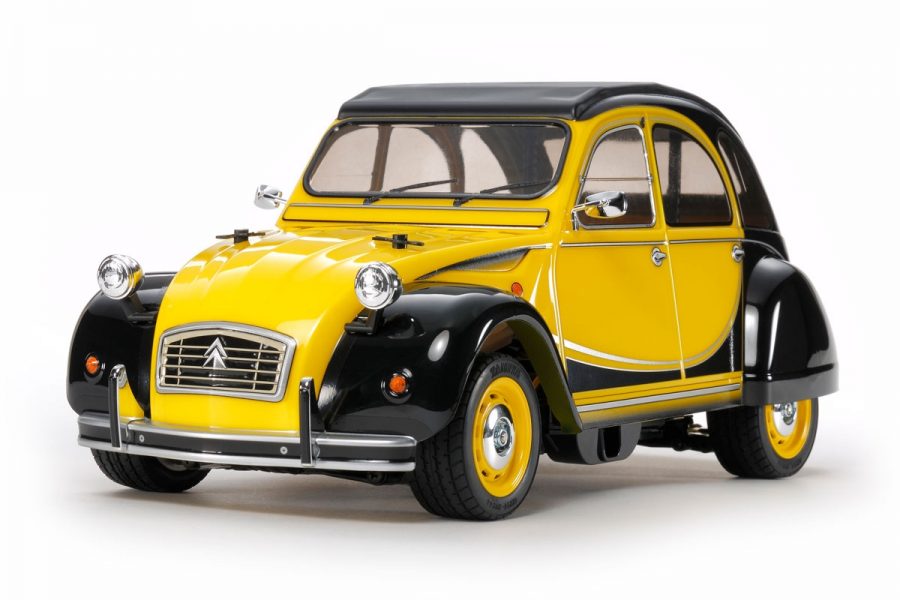
The selection of the types of cars that Tamiya models its RC vehicles after is wide-ranging. From iconic cars to some that might be unfamiliar to you nonetheless have a cool factor like this Citroen 2CV Charleston. Over 3.5 million Citroen 2CV Charleston cars were produced from 1948 to 1990. Its reliable air-cooled 2-cylinder engine got the little front wheel drive car from A to B with little fuss, and the car could accommodate four adults adequately. With its soft suspension designed for off-road driving, it is said that the 2CV could traverse a ploughed field without breaking any of the eggs it carried. Tamiya modeled their Citroen after the 1982 model year 2CV Charleston with the body accurately rendered in lightweight and durable polycarbonate. Separate injection molded parts are included to recreate the front bumper support, headlights and side mirrors. To compliment the body, gun metal color 11-spoke wheels are matched with tread patterned radial tires. To follow in the footsteps of the full size Citroen, Tamiya spec’d the M-05 chassis since it is FWD.
Citroen 2CV Rally – M-05Ra (#58670)
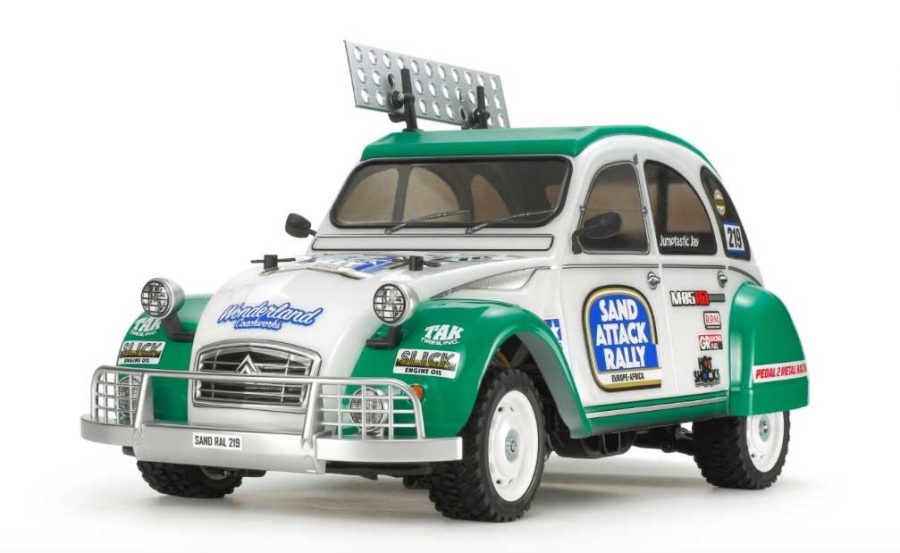
A variation of the Citroen shown above, the Citroen 2CV Rally is a highly realistic recreation of the full-size car that competed in rally racing across Europe. The polycarbonate body comes with a separate bumper, side mirrors and a recovery ladder with hold-down roof mount. Underneath sits the dedicated rally chassis, the M-05Ra. The rally-tuned M-05Ra chassis features a lightweight, narrow, durable, and an easy-assemble semi-monocoque plastic composite frame. The 4-wheel independent double wishbone suspension is equipped with specially designed hub carriers and front and rear uprights to increase ground clearance by 5mm. The front skid guard, side guards, and rally block tires are also included to allow you to enjoy both gravel and tarmac driving. A 540 brushed motor with the Tamiya TBLE-02E speed control provides the go for the rally Citroen.
Mazda MX-5 – M-05 (#58624)
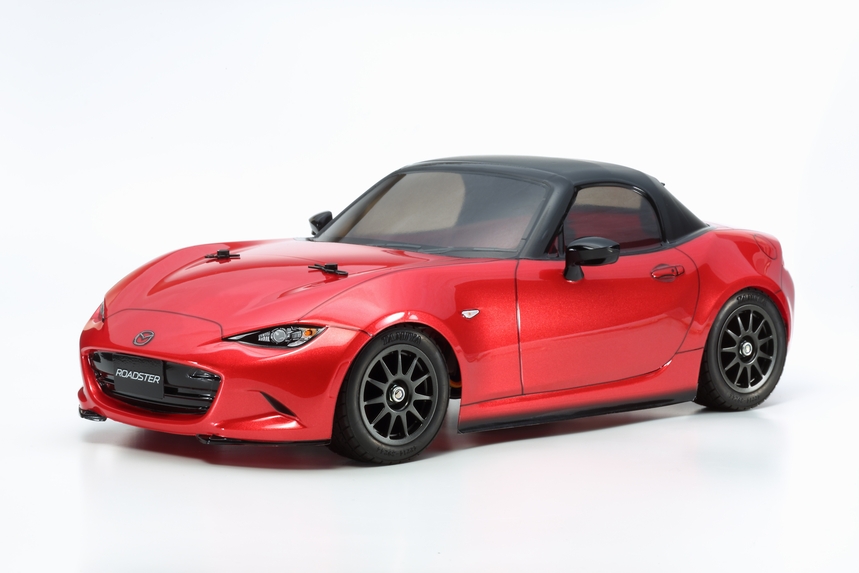
The Mazda MX-5 or more commonly known here in the US as the Mazda Miata, is the recreation of the 4th generation of the car. This iconic car with a heritage dating back to 1989 and has a total sales in excess of 950,000. The dynamic and lightweight car was made to amplify the thrill of driving, with a punchy 1.5-liter (2.0-liter in North American) inline 4-cylinder engine and 6-speed transmission, while including modern must-haves such as advanced safety equipment. Tamiya faithfully captures the fun and maneuverability of the real life subject as it comes on the proven M-05 chassis. The M-05 is a simple to build FWD machine, which allows for plenty of after-market parts to be outfitted as your skills develop.
Mazda2 – M-05 (#58640)
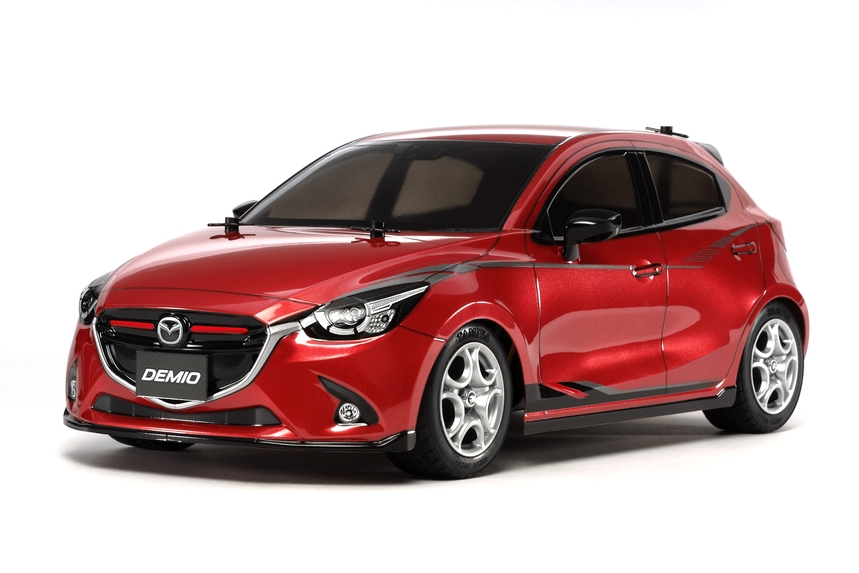
Modeled after the award winning Mazda2, the Tamiya RC version comes outfitted with the M-05 front wheel drive chassis that allows for accurate scale driving and precise control in the corners. The full size 4th gen Mazda is known around the world as the Mazda2 and as the Demio in Japan. This compact car has a body incorporating design themes from Mazda’s “Soul of Motion (Kodo)” concept. For example, the front section with its striking headlights stylized like the eyes of wild animals, linked by the “signature wing” skirting the front grille. It won the 2014-2015 Car of the Year Japan award for Mazda.
Mini JCW Coupe – M-05 (#58520)
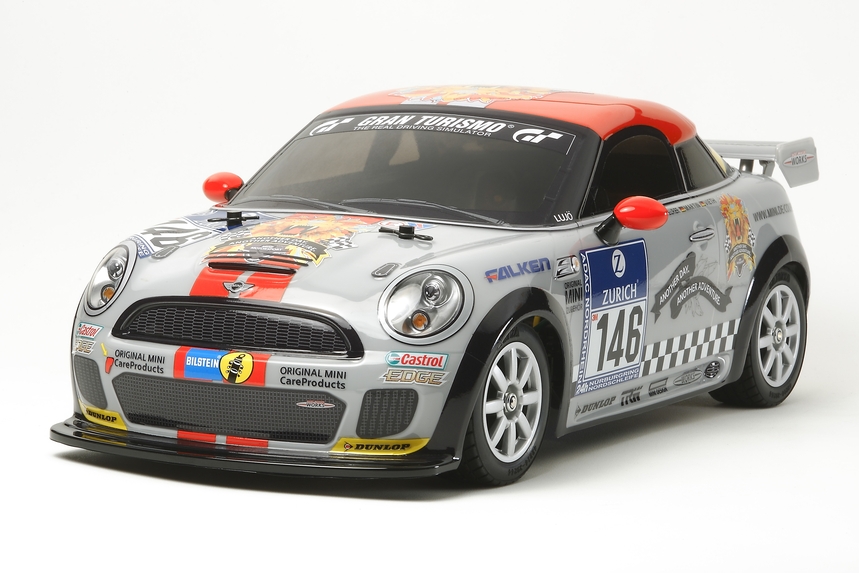
We are big fan of race replicas, especially ones that are so accurately modeled like this Tamiya Mini JCW Coupe race car. This specific car raced in the SP 3T class at the 39th ADAC Zurich 24 Hours of Nurburgring 2011. This car was based on the new 2-seater MINI Coupe and features race-spec modifications including a sharper windshield angle, adjustable suspension and rear wing, and a 247hp 1.6-liter four-cylinder twin-scroll turbo engine that enables a top speed of 149mph. Chances are that most of us won’t be able to get behind the wheel of the real Mini race car, but you can with the Tamiya version. Built on the M-05 platform, you can dial it for some high-speed laps around the local track. In order to have the RC version look like the full size, Tamiya created a super detailed polycarbonate body and did not stop there. More details were added like a molded rear wing, realistic-looking light buckets, molded side mirrors and a complete set of stickers.
NSU TT Jagermeister – M-05 (#58649)
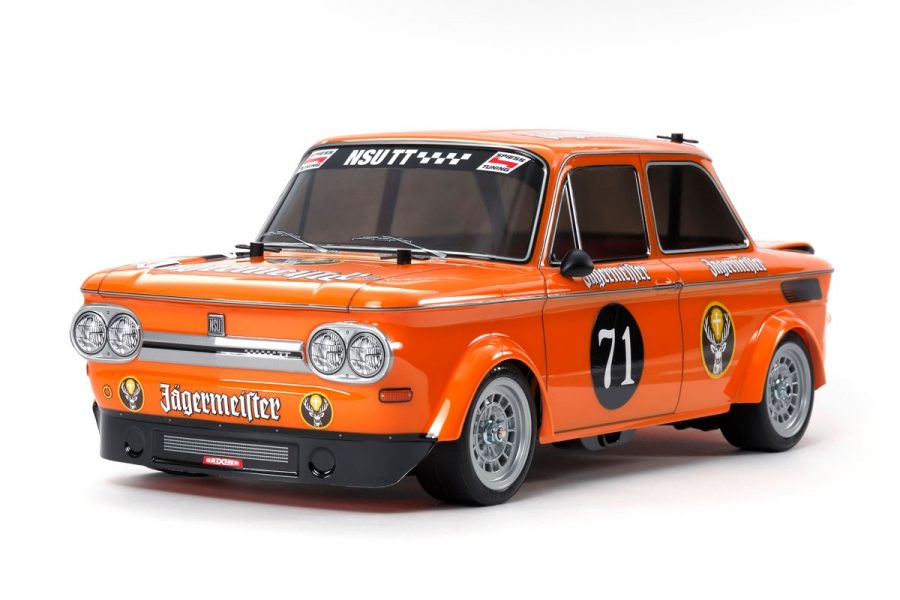
NSU is not a common car manufacturer for us in the United States, however in Germany it played a vital role in the history of automobiles. Shown here is a model that recreates the Jagermeister-sponsored edition of the NSU TT. It is a race oriented variant of the NSU Prinz of which almost 2,500 were built in the late 1960s and early 1970s by the NSU Motorenwerke AG company. A variety of inline 4-cylinder engines powered the NSU TT depending upon the spec. Tamiya built their NSU TT around the M-05 platform that is a compact unit based around a lightweight monocoque setup and offering great weight distribution with a nice low center of gravity.
Volkswagen Golf MK.1 GRP.2 – M-05 (#47308)
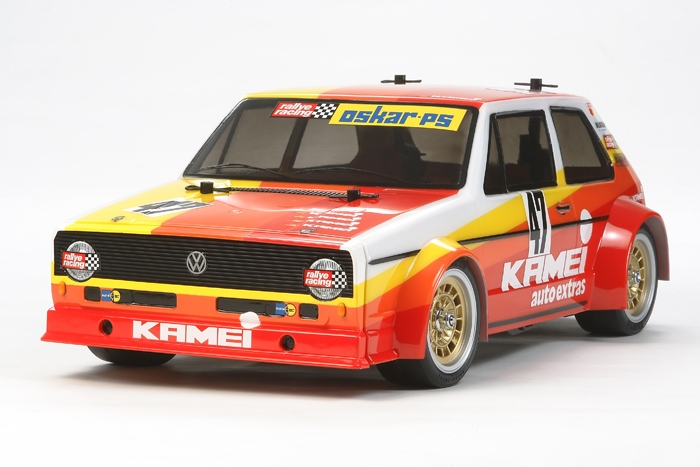
From the not so well-known NSU to the well-known, the Volkswagen Golf MK.1 was a successful European touring car. The Kamei sponsored car with its distinctive livery ran in the low-modification Group 2 class of its day. To precisely replicate the looks of the full-size Kamei Golf, use Tamiya polycarbonate paint for the body and then follow it up with the included detail stickers. The heart of the VW Golf MK.1 is Tamiya’s M-05 front wheel drive chassis which makes this car a lot of fun to drive and captures the agile maneuverability found on the real race car.
Alfa Romeo Giulia Sprint – M-06 (#58486)
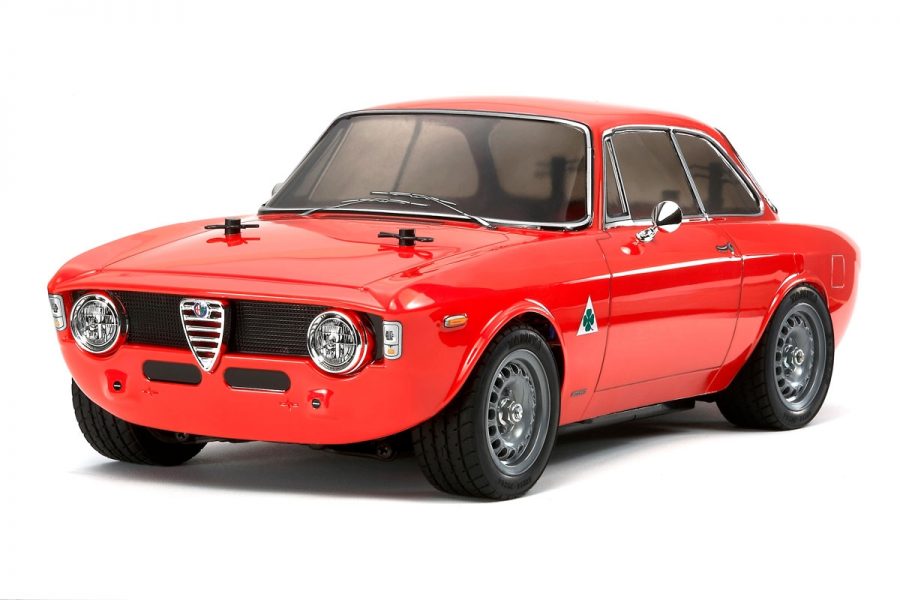
This Italian sports car was one of the first to drop a powerful engine into a lightweight car. This made the Alfa Romeo Giulia Sprint a total thrill to drive. The Tamiya Alfa Romeo Giulia Sprint is outfitted in racing from. The rear wheel drive M-06 chassis is right at home on asphalt surfaces and matches up perfectly with the Giulia Sprint. For improved rear traction and drivability, the chassis has 4-wheel double wishbone suspension paired with rear 60D Super Grip Radial tires.
Lowride Pumpkin – M-06 (#58594)
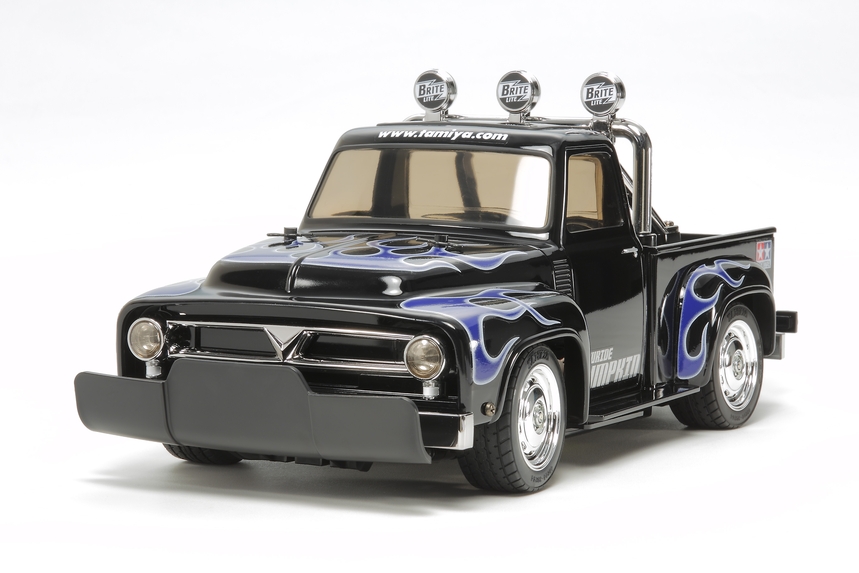
Out of all the cars mentioned in this article, the Lowride Pumpkin is the only one that comes with an ABS plastic hard body instead of the more common polycarbonate. This body was originally used on the Midnight Pumpkin which is a 1/12-scale off-road monster truck. Dropped on to the mighty M-06 chassis is a cool variation for this great-looking pick-up body.
Volkswagen Beetle – M-06 (#58572)
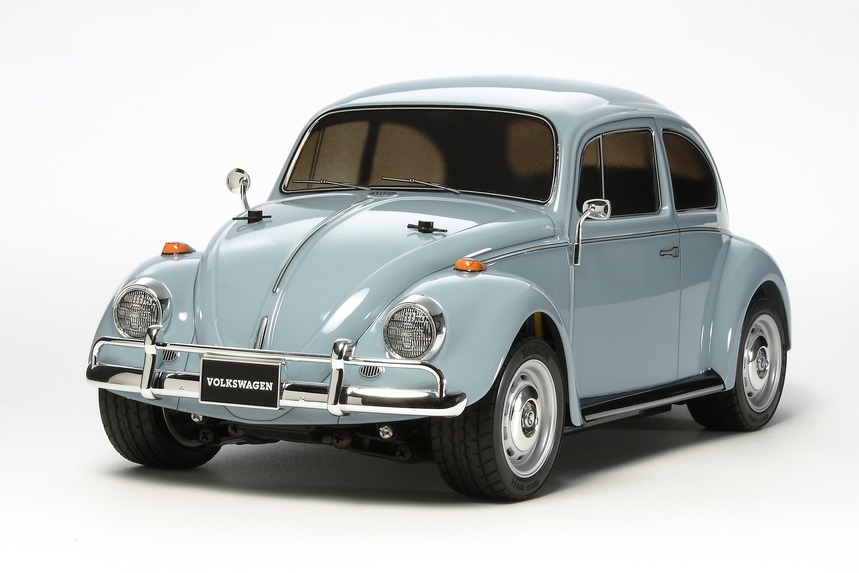
There are very few cars that are as identifiable as the Volkswagen Beetle worldwide. A record 21 million Beetles were produced over a production period spanning 60-plus years. It was the brainchild of the famed German designer Ferdinand Porsche, and the iconic car saw military service during the Second World War. In 1996, Tamiya first released is VW Beetle on the M-04 chassis. The version shown here now sits on the modern and highly popular rear wheel drive M-06 chassis platform.
Volkswagen Type 2 T1 – M-06 (#58668)
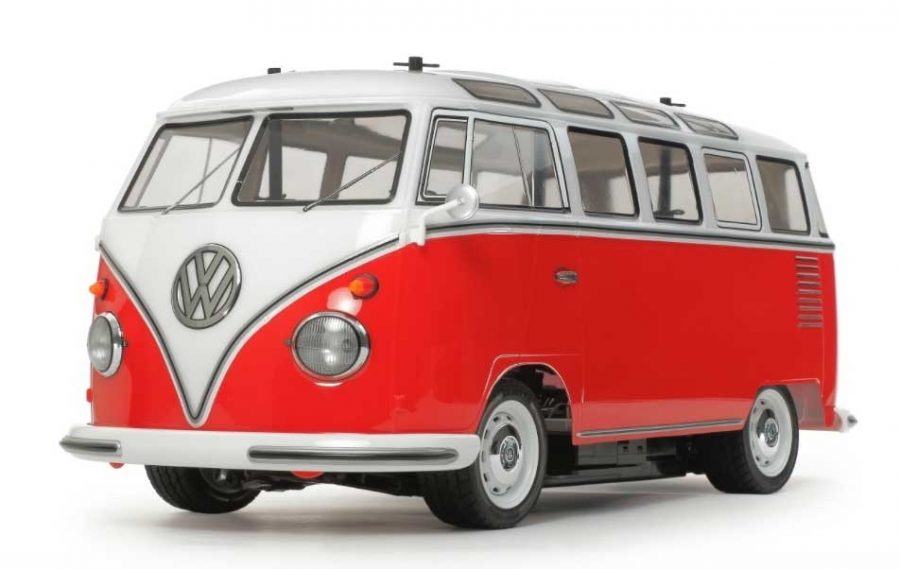
In the full size car market we have seen that the early Volkswagen Type 2 split windshield van has become highly sought after by collectors. The Volkswagen Type 2 was based on the VW Beetle, also known as the Type 1 since the Beetle was the first car produced by the German automaker and the Type 2 was the second, thus earning its Type 2 designation. It is best known as the Volkswagen Bus by the numerous fans that love this vehicle. In 1950 the Volkswagen Bus (T1) was introduced and Volkswagen continued its production up through 1967. Volkswagen then updated the Bus with the most noticeable change of moving from a split front window to a single windshield. Tamiya has released a remarkable 1/10-scale version that depicts the first generation (T1) of the Volkswagen Type 2 van. Tamiya wisely choose the 23-window, split windscreen variation since it is currently the most popular. The body is paired with the rear wheel drive M-06 chassis for realistic fun driving just like the real Type 2 T1. Tamiya 60D radial tires are used up front and 60D super grip tires are spec’d for the rear. Each are wrapped around metal-plated dish type wheels that completes the iconic look of the VW Bus.
For more information about Tamiya products, visit: TAMIYA
SPONSORED ARTICLE RC Driver The Best In RC Car & Truck News, Reviews & Video
RC Driver The Best In RC Car & Truck News, Reviews & Video 



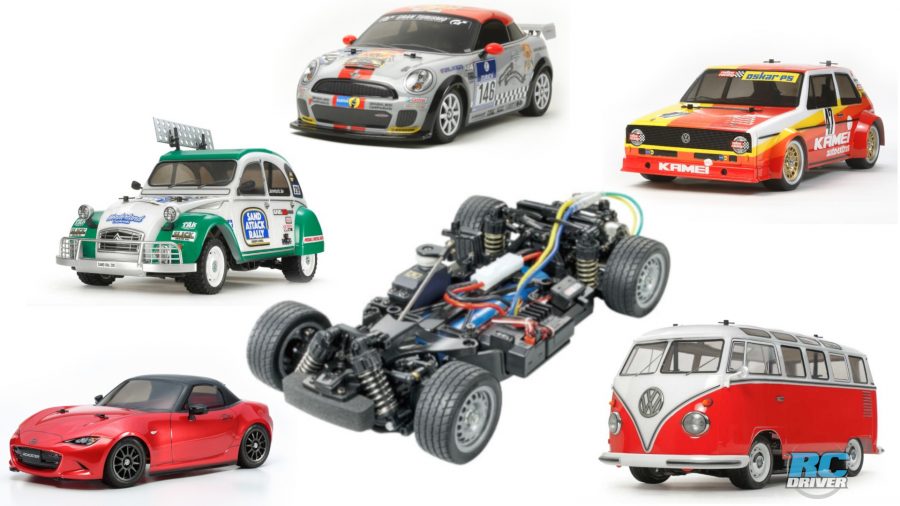
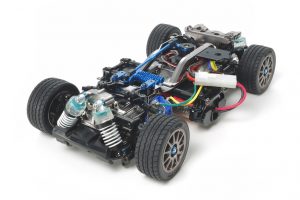
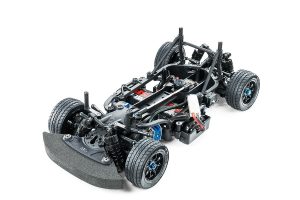






does the newer kit accept the square battery, or just the pro & v2 kit?
m05 ve ,m06 only
Great Read! Question, do you know if the M06 bodies are interchangeable? I want the vw bus, but it would cool to switch out to say the vw bug, etc… thanks!
Volkswagen Beetle was first available on the M02L chassis, otherwise good read. I have all the 1-8 m chassis, now looking at the other 3, very cool cars.